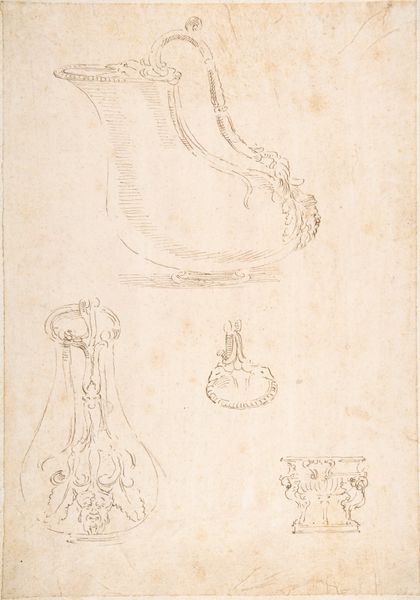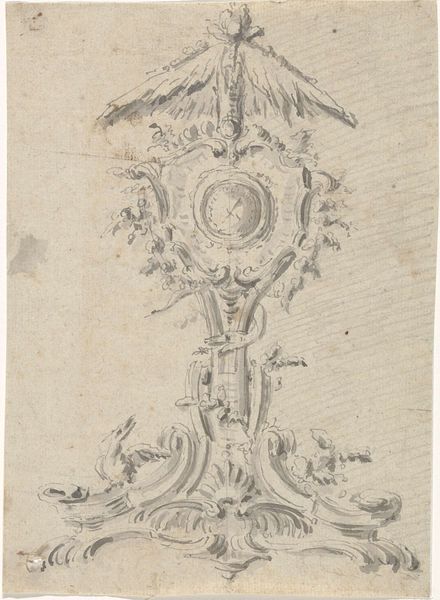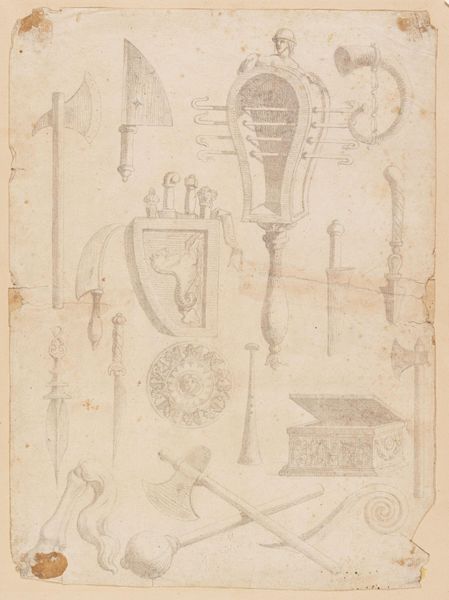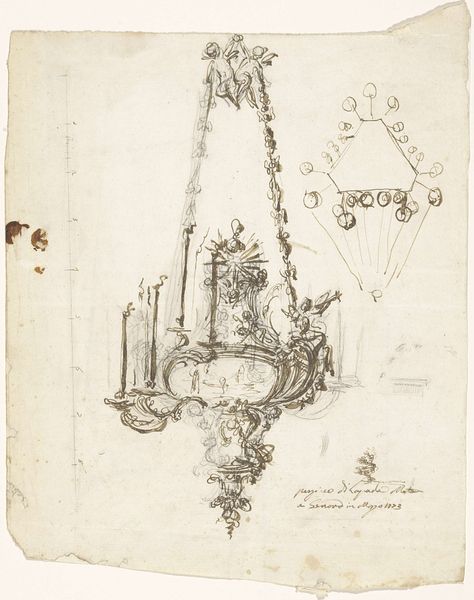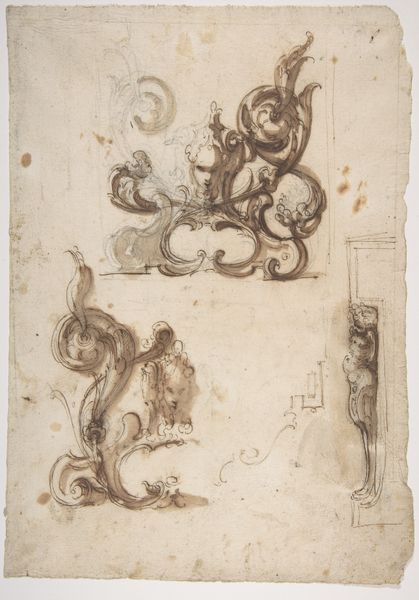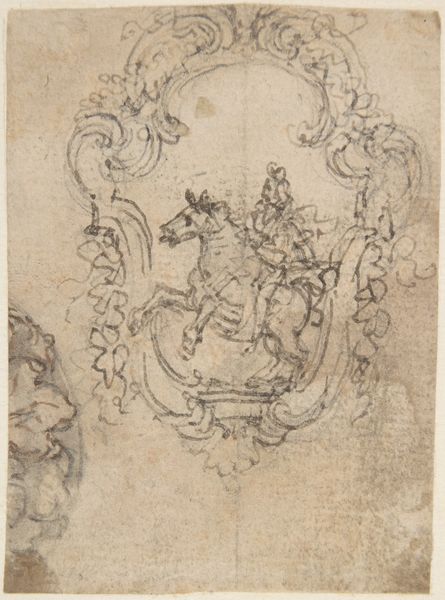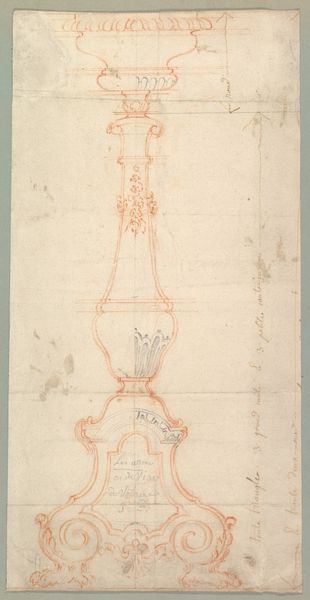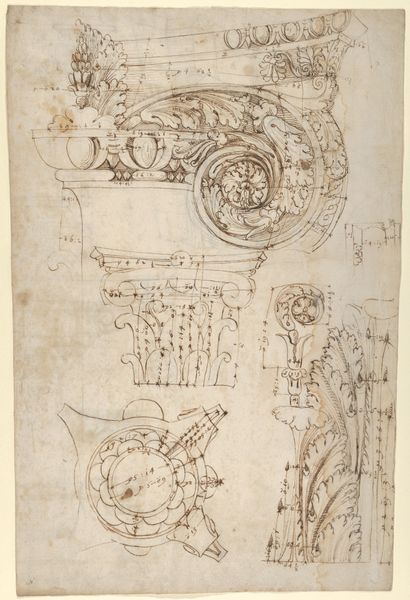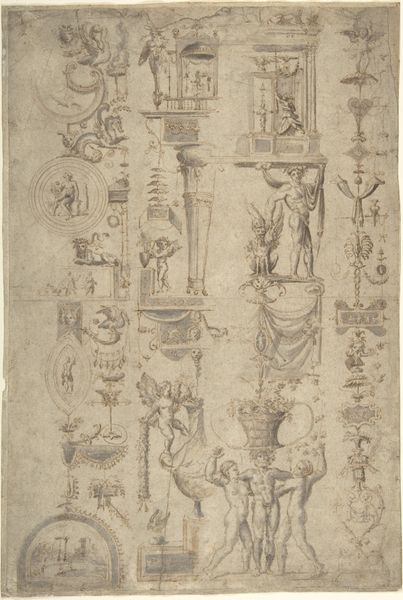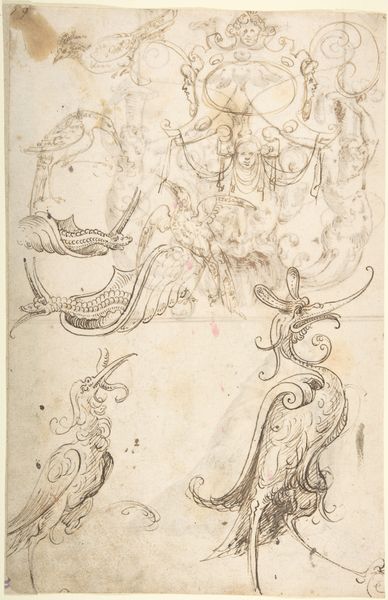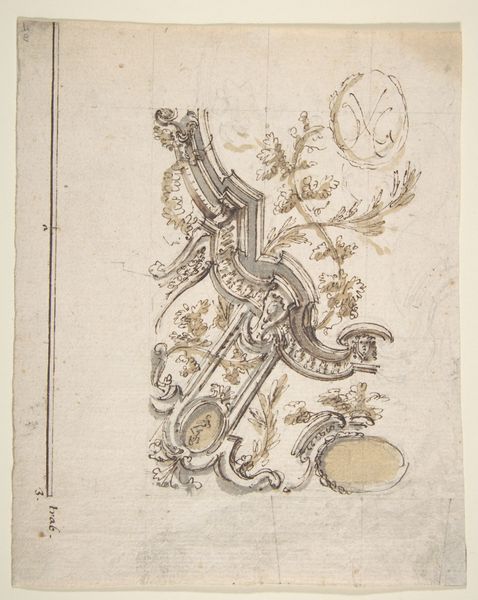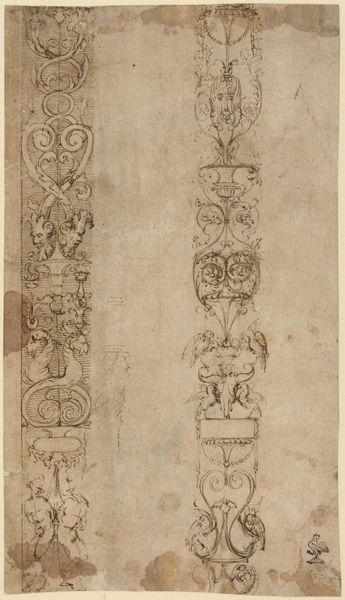
Two Designs for the Hilt of a Sword (recto); Two Designs for Helmets (verso) 1500 - 1600
0:00
0:00
drawing, pencil
#
pencil drawn
#
drawing
#
form
#
11_renaissance
#
pencil
#
pencil work
#
history-painting
Dimensions: 7-15/16 x 7 in. (20.2 x 17.8 cm)
Copyright: Public Domain
Curator: Here we have “Two Designs for the Hilt of a Sword”, a Renaissance-era drawing from around 1500 to 1600, presently residing at the Met. Editor: There's a delicacy to it, almost like a ghostly blueprint. I immediately focus on the pencil work; you can practically see the artist experimenting, lines overlapping as they refined the design. It’s far more expressive than you would imagine for weapon designs. Curator: Indeed. Considering this was a functional object, it reflects a cultural reverence for weaponry that went beyond mere utility. Arms and armor, throughout Renaissance Europe, served as signifiers of status, power, and even artistic patronage. Editor: The craftsmanship itself becomes a performance, a display of material wealth. Look at the ornate details worked into what would otherwise be the purely functional components: those lion head decorations, or that serpent coiled around the hilt on one design. It transforms the sword into an art object first and a tool second. What pencils or other material were available at that moment must have surely had an impact in the drawing precision and fineness, and on the decision to leave it like this, with very little or without any sort of finishing? Curator: Absolutely, the lion heads could allude to valor and nobility, attributes connected to the owner, it surely shows what impact classic symbolism had in Renaissance cultural values. There's also the act of drawing itself, which elevates the designs from functional sketches to displays of artistic skill, circulated among workshops or presented to potential clients. The verso contains sketches for helmets, confirming the artist's breadth. Editor: You can feel the weight of history in those sketched lines. I see echoes of the labour involved, of the forge, the materials like steel or iron they intended to shape. What’s striking is that, regardless of function, every stage from initial sketch to production underscores its symbolic worth. The cultural meaning overrides practical application in several elements. Curator: Exactly, we gain insight not only to artistic creativity of the Renaissance, but into social and cultural norms surrounding warfare, power, and class at that time. Editor: So much for such simple, elegant lines. They narrate quite the multifaceted cultural story of the means to kill with artful mastery!
Comments
No comments
Be the first to comment and join the conversation on the ultimate creative platform.
